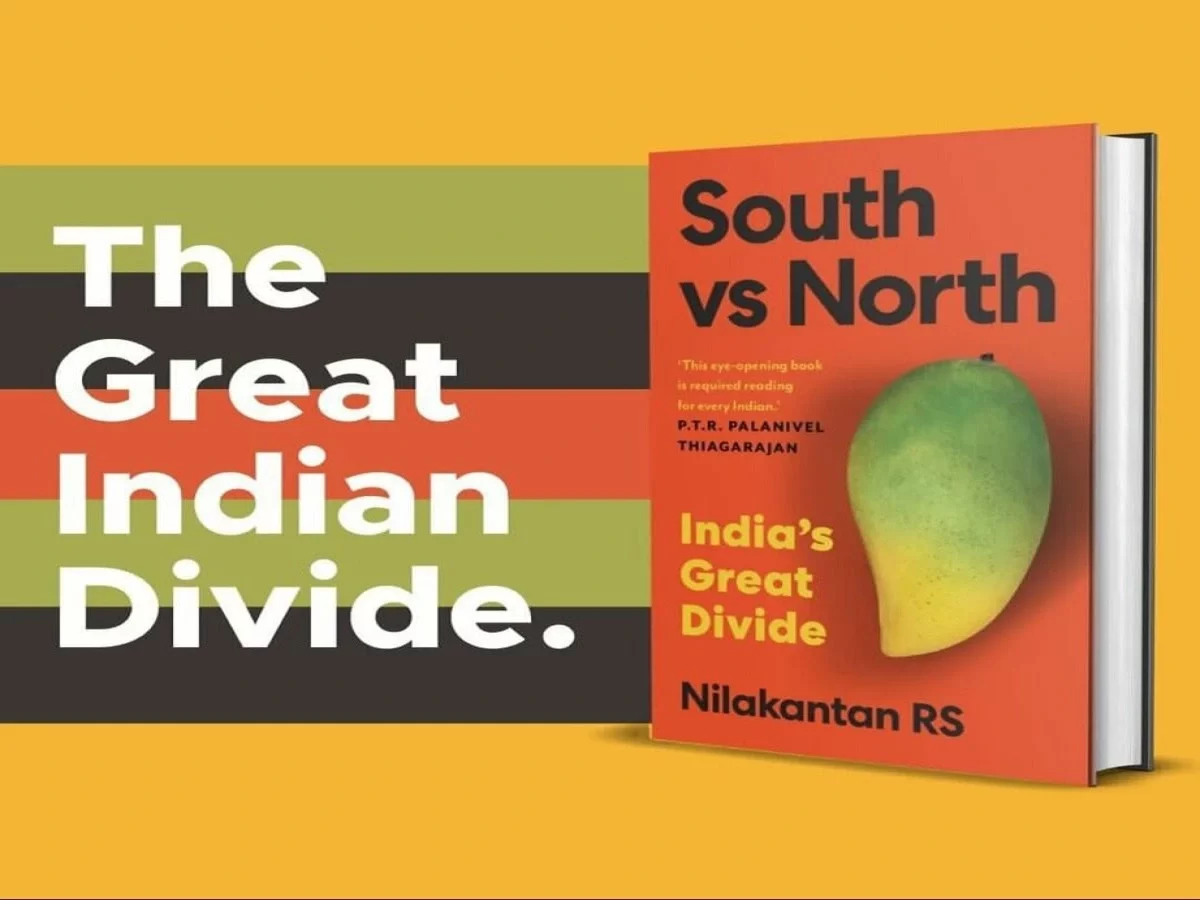Read in : தமிழ்
During an interview with inmathi.com, data scientist R S Neelakantan said that irrespective of whether you are rightwing, leftwing or centrist, you wouldn’t want babies to die in society. Neelakantan also hints that what makes us save our babies also has little to do with the economic philosophy adopted by the government. If a society is cohesive, or if there is social cohesion, then people as a whole will demand or work to achieve basic goals in health, education and economic prosperity. Their governments will be that much more responsive and deliver on these, he says.
In his book, South vs North: The Great Divide, Neelakantan has shown with extensive data how far ahead the southern states are in education, health and spreading economic prosperity among people. He has shown that even the more prosperous north Indian states are lagging in social indicators.
Tamil Nadu has outstripped even Kerala in some measures, according to North vs South. One of the success stories of Tamil Nadu is Gross Enrollment Ratio that measures the total students enrolled and studying in schools or colleges to the total population in that age group. In Kerala, GER tapers off as we go higher into higher secondary and college education. But, in Tamil Nadu, GER holds or reduces less. For instance, more than half of the population in college age are actually in college in Tamil Nadu, more than in Kerala.
What all these achievements have meant is a very high degree of population control. Tamil Nadu’s Total Fertility Rate is already below 2. This means for every couple, there won’t be two children replacing them.
Neelakantan cites Infant Mortality Rate that measures how many children die between birth and one year of age per thousand born. He shows how Kerala’s 6 compares to that of the US whereas Madhya Pradesh’s 48 compares to war-torn Afghanistan and Niger
Further, the TFR of women who are graduates is 1 in Tamil Nadu. Given that far more women are likely to continue into college than any other state, quite soon, for every two couples, i.e., four people, there will only be two children replacing them. In future, this would mean a quick decline in population in Tamil Nadu in absolute terms. The state is likely to see a decline in population starting 2030, as North vs South points out.
Neelakantan raises the scary outcome of this success. Our political system is such that the number of Lok Sabha Members of Parliament from a state should reflect its population. But this was frozen by Indira Gandhi when she was in power in 1976, apparently to goad states into controlling population. That freeze, which was extended after 25 years, will expire in 2026.
Also Read: Is the world on the brink of recession? Economist weighs in
Neelakantan argues that given the northern base of the BJP and its centralizing tendency, we may well see a delimitation exercise in which Tamil Nadu’s number of MPs may come down to 30 and Uttar Pradesh to go up to 90, reflecting population levels in those states. States that have performed well will be penalized for doing well, he says, adding their political power and leverage at the center will only erode further.

Data Scientist R S Neelakantan
Neelakantan’s book points out that despite the growing gaps in social, educational and economic indices between the south and the north, the central government is increasingly setting uniform policy goals for all states. He gives a specific example about how there was a promise of sharing more of the tax collected by the center with states. From 30% of the central taxes that form a pool divisible with states, this was increased to 40% at the time the Modi government took power.
But Neelakantan has shown that instead of states getting a greater share of central taxes, there has been a reduction because the center has, through policy, doubled the tax bracketed as cess and surcharges that is not shared with states.
These cesses and surcharges go into funding centrally sponsored schemes such as in health and education that are tailored to meeting the needs of the northern states and whose goals reflect conditions in those states. To Neelakantan, this is yet another case of performing states getting penalized.
What has helped southern states progress is linguistic identity that has fed sub-nationalism, Neelakantan argues. It has given them integrity, social cohesion and therefore better governance. Neelakantan agrees linguistic identity as a cause is only speculative and could be among many reasons.
Neelakantan’s book points out that despite the growing gaps in social, educational and economic indices between the south and the north, the central government is increasingly setting uniform policy goals for all states
For Kerala, South vs North points to the Aikya Keralam movement that promoted the Malayali identity. Neelakantan doesn’t give much room for the idea that Leftist ideology has played a significant part in the Kerala model, showing that in many parameters the older generation in West Bengal is better off, indicating that West Bengal has declined in many indices. The long Left Front rule did not make the state progress, his book implies. “They may have voted a Marxist party to power. But did that mean Marxist ideas were shared widely among the people and they worked unitedly to put them into practice,” he asks.
Also Read: ‘State loses as DMK ideology makes TN invisible in Delhi’
This could be the point of departure for a counter to South vs North. It may well be that Narendra Modi is providing the social cohesion to the north needed for the northern states to achieve better governance and improve on indices. Nationalism across India is probably what would make India progress, if we go by a key argument in South vs North. Neelakantan shrugs his shoulders to this argument and says if the northern states believe religion can provide them the social cohesion then good luck to them. Leave Tamil Nadu out of it, he says.
Nationalists would argue that since India needs to survive as a nation if states were to progress, the centralizing tendencies can also be justified then. Northern states provide a high share of personnel in the defence so they would need to be compensated for keeping India safe, it could be argued. A strong center will need to address imbalances so the nation can pull together ahead. The increasing stress on centrally sponsored schemes is only a natural balancing requirement then.
The Modi regime proceeds on the premise that a robust nationalism based on Hinduism will provide the glue and take India further. If identity is what it takes to progress, then why not a Hindu identity covering all of India, the BJP would argue.
South vs North: The Great Divide is a valuable addition in fleshing out the pulls and counterpulls in today’s India. Neelakantan believes India should change its governance structure. He wants a type of government in which naysayers have veto powers. In other words, decisions and governance freezes or paralyses when there is disagreement. So governance decisions are pushed to levels where there is agreement, which is a reflection of social cohesion. If that unanimity is at the state level, let states make more decisions. If that unanimity is at the local body level, then local bodies get to act better and make decisions. This is certainly the exact opposite of what the ruling dispensation in New Delhi stands for.
Read in : தமிழ்

